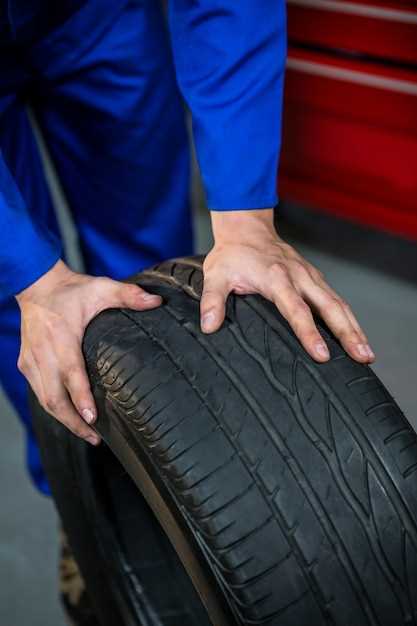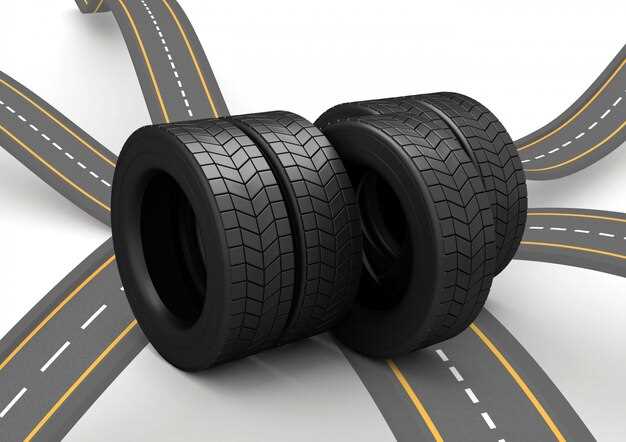
The choice between slicks and treaded tires can dramatically impact your vehicle’s performance and handling characteristics. Selecting the right tire depends on various factors, including surface conditions, driving style, and specific requirements of the vehicle. Understanding the core differences and benefits of each tire type will help you make an informed decision tailored to your unique needs.
Slick tires are designed for optimal grip on dry surfaces, thanks to their smooth, tread-free surface. These tires provide maximum contact area with the road, allowing for improved handling and traction during high-speed maneuvers. However, their lack of tread makes them unsuitable for wet or slippery conditions, where water can lead to hydroplaning and loss of control. Enthusiasts in motorsports often prefer slicks for their performance advantages on racetracks.
Conversely, treaded tires feature grooves and patterns specifically engineered to channel water away and maintain traction on various surfaces. This makes them versatile for everyday driving, especially in inclement weather. Tread patterns can vary, affecting performance in wet or muddy conditions, but generally, treaded tires offer a balance between grip, comfort, and safety for daily use.
Evaluating your driving environment, conditions, and performance expectations will lead you to the right choice. By weighing the benefits of slicks and treaded tires, you can enhance your driving experience and ensure safety on the road.
Slicks or Treaded Tires: Which One Fits Your Needs
Choosing between slicks and treaded tires is crucial for optimizing performance in various driving conditions. Slicks are designed for dry surfaces and offer maximum grip, allowing for better cornering and acceleration. Their smooth, uninterrupted surface facilitates a larger contact patch with the road, enhancing stability and responsiveness. This makes them an excellent choice for racetracks or any environment where wet weather isn’t a concern.
On the other hand, treaded tires are engineered for versatility. Their patterns channel water away, reducing the risk of hydroplaning on wet surfaces. Treaded tires provide improved traction in rain or on muddy terrain, making them more suitable for everyday driving or off-road scenarios. The presence of grooves allows for better control in variable conditions, enabling drivers to navigate through diverse environments safely.
When deciding between slicks and treaded tires, consider the primary use of your vehicle. For track enthusiasts who prioritize speed and performance on dry surfaces, slicks are the ideal option. Conversely, if your driving involves mixed conditions or requires reliability during inclement weather, treaded tires will meet those needs effectively.
Ultimately, the choice hinges on your specific driving style, environmental conditions, and performance expectations. Evaluating these factors can guide you in selecting the right tire type to enhance your driving experience.
Performance Comparison: Slicks vs. Treaded Tires
Slick tires are designed for maximum grip on dry surfaces, providing a large contact area with the road. This lack of tread allows for increased friction, resulting in superior acceleration, cornering, and braking performance. The smooth surface of slicks also minimizes the risk of hydroplaning, which is critical during dry track conditions. Therefore, for motorsport enthusiasts seeking to extract every ounce of performance from their vehicles, slicks are often the preferred choice when the weather is clear.
On the other hand, treaded tires incorporate grooves that enhance grip on wet surfaces by channeling water away from the contact patch. The pattern in the tread allows for better handling and reduced risk of slipping in rain or adverse weather conditions. Tread helps to dissipate hydroplaning effects and maintains some level of traction, making these tires more versatile for everyday driving and varying weather scenarios.
When comparing performance, slicks excel in dry conditions, suitable for racing and track use. Their performance diminishes in wet conditions due to the absence of tread, leading to potential loss of control. Treaded tires provide a balance of performance in both wet and dry conditions, albeit with slightly less grip than slicks when the surface is dry. Therefore, the choice between slicks and treaded tires largely depends on the intended use, environmental conditions, and driving style.
A driver focused on competitive racing on dry tracks will benefit from the performance characteristics of slicks. However, for everyday driving or variable weather conditions, treaded tires provide essential versatility and safety. Understanding the specific needs and preferences is crucial in selecting the right tire type for optimal performance.
Weather Conditions: When to Choose Each Type

When deciding between slicks and treaded tires, weather conditions play a crucial role in determining the best fit for your needs. Each tire type is designed to perform optimally under specific environmental conditions.
Here’s a guide to help you choose:
- Slick Tires:
- Ideal for Dry Conditions:
- High Temperatures:
- Racing Environments:
Slick tires provide maximum surface area for better grip on dry asphalt. They are designed to enhance traction during warm and sunny weather.
These tires work best when temperatures are high. The rubber compounds used in slicks offer better performance as they heat up, providing optimal grip.
In professional racing contexts, slicks are preferred as they help achieve faster lap times on well-prepared tracks where water presence is minimal.
- Treaded Tires:
- Wet Conditions:
- Cold Weather:
- Versatile Use:
Treaded tires are specifically engineered to channel water away from the contact surface, reducing the risk of hydroplaning. They are vital for driving in rainy conditions.
In colder environments, treaded tires maintain flexibility and performance, allowing them to offer better grip and safety. Their design helps in navigating icy or snowy roads.
Treaded tires are suitable for daily driving and various weather conditions. They are an excellent choice for mixed environments, ensuring safety and maneuverability.
Ultimately, the decision between slick and treaded tires should consider the prevailing weather conditions, the specific use case, and the desired performance outcome. Always prioritize safety and suitability for the environment you will be driving in.
Cost vs. Longevity: Analyzing Your Investment

When it comes to choosing between slicks and treaded tires, understanding the balance of cost and longevity is crucial for making an informed decision. Slicks, known for their superior performance on dry surfaces, often come with a higher upfront price tag. However, their longevity can vary significantly based on usage and driving conditions.
Slick tires typically provide better grip, which translates to faster lap times and enhanced overall vehicle performance. This characteristic makes them particularly appealing for racing enthusiasts and those who prioritize speed. Despite their higher cost, the performance benefits may justify the investment for competitive drivers. However, slicks may wear out more quickly than their treaded counterparts if used on unsuitable surfaces or for extended periods. This can lead to the need for more frequent replacements, potentially negating the initial savings.
On the other hand, treaded tires are designed for longevity and versatility. They are more durable in various weather conditions, providing better traction and stability in wet or uneven surfaces. While their performance in dry conditions may not match that of slicks, the extended life of treaded tires can offer better value over time, particularly for everyday drivers or those who drive in diverse environments.
Ultimately, the choice between slicks and treaded tires should not only boil down to initial costs but should also factor in how often you’ll need to replace the tires based on your unique driving habits and conditions. Analyzing your specific needs will help you determine which option offers the best long-term investment.
